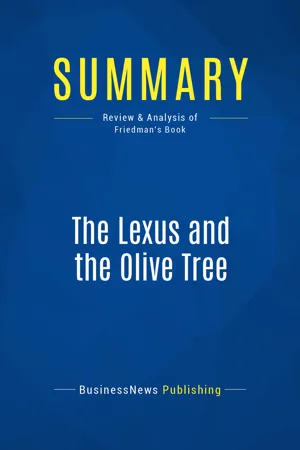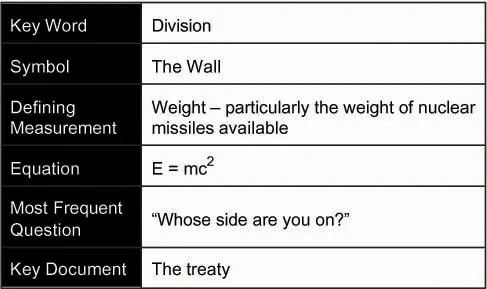
Summary: The Lexus and the Olive Tree
Review and Analysis of Friedman's Book
BusinessNews Publishing
- English
- ePUB (handyfreundlich)
- Über iOS und Android verfügbar
Summary: The Lexus and the Olive Tree
Review and Analysis of Friedman's Book
BusinessNews Publishing
Über dieses Buch
The must-read summary of Thomas Friedman's book: `The Lexus and the Olive Tree: Understanding Globalization`.
This complete summary of the ideas from Thomas Friedman's book `The Lexus and the Olive` shows that globalisation is a fundamentally new and better way to do business. As such, a new and brighter era of globalisation is just in the process of beginning as all the major marketplaces evolve towards becoming global markets. Thomas Friedman uses a metaphor to explain the challenges in this upcoming era of globalisation: the human drive for enrichment and the best products (represented by the Lexus) will sometimes conflict with the natural desire to hold on to what has traditionally mattered in creating a sense of national and personal identity (represented by the Olive Tree). The challenge for individuals and nations will be to find and maintain a healthy balance between those two perspectives. This summary highlights that globalisation creates the opportunity to sell into vast markets but pure commercial success will only be meaningful if it can be accomplished using means that reflect the individuality and cultural values of the people involved.
Added-value of this summary:
• Save time
• Understand the key concepts
• Increase your knowledge
To learn more, read `The Lexus and the Olive` and discover a challenging and provocative book for all who care about how the world really works.
Häufig gestellte Fragen
Information
Summary of The Lexus and the Olive Tree (Thomas Friedman)
Section 1: How Globalization Works
- Domestic markets for goods and services are opened up to international competition – anyone can sell into the marketplace without requiring licenses, quotas and so on.
- State owned enterprises are privatized.
- All tariffs and other forms of subsidies for domestic companies are eliminated, allowing true market dynamics to set prices without artificial distortion.
- The markets are deregulated – allowing new entrants to come into the marketplace without restriction.
- Foreign investment is permitted without requiring government approval.
- Competition is encouraged in all markets as the key mechanism for lowering prices and encouraging efficiency and cost-effectiveness.
- Currency may be transferred without requiring government approval, while the local unit of currency is floated and currency exchange rates are determined by the markets rather than set by the government.
- Computerization.
- Miniaturization.
- Digitization.
- Satellite communications.
- Fiber optics.
- The Internet.


- The traditional balance between nation-states reflecting the balance of power between the United States and all other countries.
- The balance between nation-states and the global markets – where the combined actions of millions of investors moving money around the world can have a direct impact on governments, national attitudes and individual corporate success.
- The balance between individuals and nation-states – because people are now wired with direct access to large markets without intermediaries.
